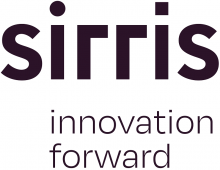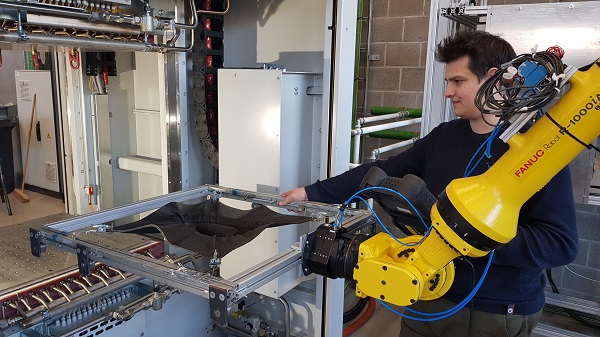Jakob Kesteloot 

Who is Jakob Kesteloot?
I studied Electronics-ICT engineering at KU Leuven and graduated with a master’s in industrial sciences. I wrote my thesis on connecting machines for Industry 4.0 through SIRRIS and then joined them full-time after graduation as an IoT engineer. I’ve also completed a postgraduate programme in Innovative Entrepreneurship where I looked at the use of IoT applications for track and tracing of containers. SIRRIS is the ‘innovation companion of the Belgian technology industry’ and while working here I’ve got into Industry 4.0 applications and that involved a sort of natural transition from machines to robots. Part of my role at SIRRIS has been an industry 4.0 research project with Flemish companies that is about ‘connected manufacturing’ where we analysed the challenges faced by the various stakeholders, i.e., production companies, machine builders, integrators, and software suppliers, to understand how we could accelerate the introduction of conducted technologies into their production.
With your IoT background, what sort of changes in terms of connectivity are coming?
We’re already seeing robotic cells becoming increasingly connected. To support this, standards are becoming more relevant – for example the move towards OPC UA (Open Platform Communications - Unified Architecture). There’s also the ‘Umati’ initiative – Universal Machine Technology Interface – which is taking connectivity beyond the original CNC focus towards robotics and automation. We’re seeing many different aspects of technology coming closer together – you might have read or heard about ITOT convergence, which brings together operational technology (OT) and information technology (IT). Historically OT has tended to be built for purpose and is often proprietary whereas IT tends to be more open and multi-purpose. This convergence will help us step up automation and enable us to reduce the required integration effort - robots will become more automated with less human intervention required. The easier that we make it to set robots up, the more we can increase their flexibility of use. Today I hardly ever see robots being moved to other areas of the plant but using robots along with Automated Guided Vehicles (AGV) or autonomous mobile robots (AMR) will become more common. And obviously that’s hugely important for agile production.
The DIH² network is about agile production in manufacturing. What sort of challenges do you think SMEs are facing when it comes to agile production?
I think the biggest issue for SMEs is transparency. By this I mean the visibility they have into their own production processes. To be transparent, the first thing you need to know is what is happening in production, why it is happening and then use that insight for improvement actions on your shop floor. This allows your production to become more responsive, leading to an increased productivity. But this all requires an end-to-end connectivity in the factory - it’s all about the need for valuable information. The analysis of this data allows productivity, quality, and flexibility in production to be increased. For example, you might be able to adapt the planning to the current situation or change process parameters to assure and increase quality. Most SMEs are not there yet – they’re not able to get this kind of value from their production data.
One of the key goals of DIH² was to fund Transfer Technology Experiments in agile production and you coordinated the JS2SF project. What can you tell us about it?
JS2SF was a consortium composed of an SME called Renier Natuursteen that uses CNC machines to produce high-end made-to-measure natural stone products for the building sector – such as wallcoverings, windowsills, and kitchen worktops – and Optidrive, a technology innovator focused on user-friendly intelligent robots. Renier’s problem was that sorting needs to be performed multiple times during the production process in order to minimize waste at the point of cutting the stone. Done manually, it’s time-consuming, expensive, and even dangerous. It’s necessary, but also subjective. Optidrive’s idea was to use robotics to bring faster error-free sorting to the process and to also enable sorting to be made from a quality perspective early in the production process. As the robots would take over a lot of the heavy work, this would also improve working conditions and reduce dangerous situations for the workforce. The idea was ultimately to transform the production facility from a job shop to a smart factory, hence the acronym JS2SF.
What did you have to do at SIRRIS do to bring JS2SF together?
SIRRIS had already worked with Optidrive so we pro-actively approached them to explore the TTE opportunities in DIH² and to determine whether their idea around a smart factory concept would meet the funding criteria. Optidrive was already working with Renier Natuursteen, so together we explored various ideas. They ultimately decided that they wanted to connect the robot cells to the ERP system and improve transparency in the production process. Renier was a quite typical SME set-up, dependent on the knowledge of individual machine operators that limited the ability to track production through the factory. As you can imagine, both partners saw a great opportunity to make very visible improvements.
What is the future for JS2SF?
Renier Natuursteen is now able to use a quick response manufacturing strategy which has delivered improved efficiency and visibility across their production process. In their words, JS2SF is a “money maker”. Optidrive meanwhile gained insights on how they can connect robot cells and it has enabled them to evolve their business model and offer new services and applications to both existing and potential clients.
This network brings together a diverse and wide-ranging membership – both geographically and the sectors that the partners operate in. What have you got out of being part of this?
It’s been a great opportunity for me personally to make connections in other parts of Europe. We can make such a difference by sharing knowledge and experiences. The project gave me the chance to work closely with the Linz Centre of Mechatronics in Austria and we built up a strong working relationship. As a research and technology organization, we are always looking for high-quality partners to collaborate with and DIH² has allowed me to vastly expand my pool of potential future partners for new research projects.
We have a goal of growing the network to 170 members and beyond. What would you say to organisations that are thinking of joining?
Research and innovation are becoming very collaborative, and I don’t think we can ever learn enough from each other. The DIH² Network offers opportunities to see beyond your own current borders and see what’s happening in other RTOs and innovation centres across Europe. Why would you not want access to that?
